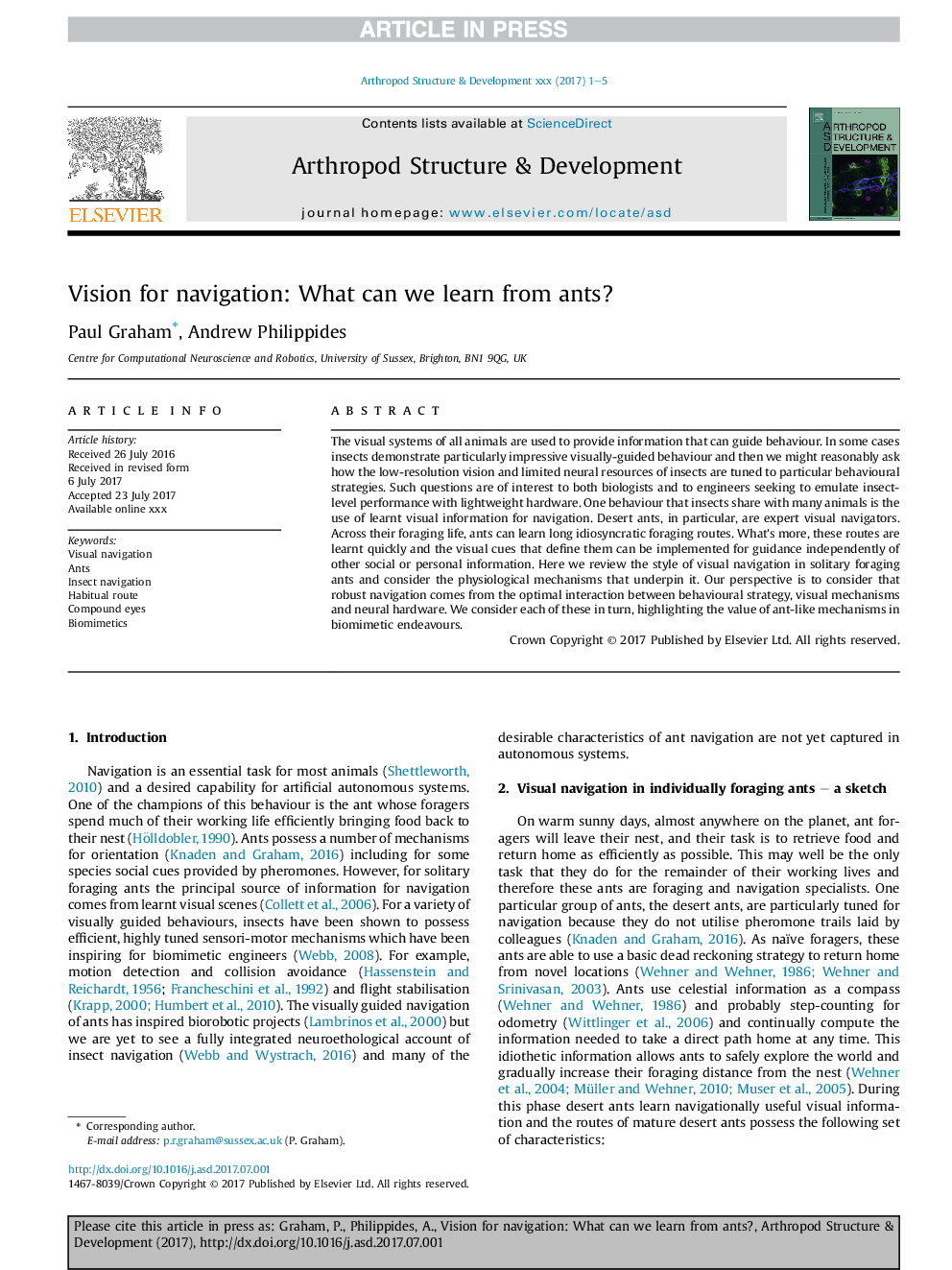| Article ID | Journal | Published Year | Pages | File Type |
|---|---|---|---|---|
| 5584979 | Arthropod Structure & Development | 2017 | 5 Pages |
Abstract
The visual systems of all animals are used to provide information that can guide behaviour. In some cases insects demonstrate particularly impressive visually-guided behaviour and then we might reasonably ask how the low-resolution vision and limited neural resources of insects are tuned to particular behavioural strategies. Such questions are of interest to both biologists and to engineers seeking to emulate insect-level performance with lightweight hardware. One behaviour that insects share with many animals is the use of learnt visual information for navigation. Desert ants, in particular, are expert visual navigators. Across their foraging life, ants can learn long idiosyncratic foraging routes. What's more, these routes are learnt quickly and the visual cues that define them can be implemented for guidance independently of other social or personal information. Here we review the style of visual navigation in solitary foraging ants and consider the physiological mechanisms that underpin it. Our perspective is to consider that robust navigation comes from the optimal interaction between behavioural strategy, visual mechanisms and neural hardware. We consider each of these in turn, highlighting the value of ant-like mechanisms in biomimetic endeavours.
Related Topics
Life Sciences
Agricultural and Biological Sciences
Insect Science
Authors
Paul Graham, Andrew Philippides,
